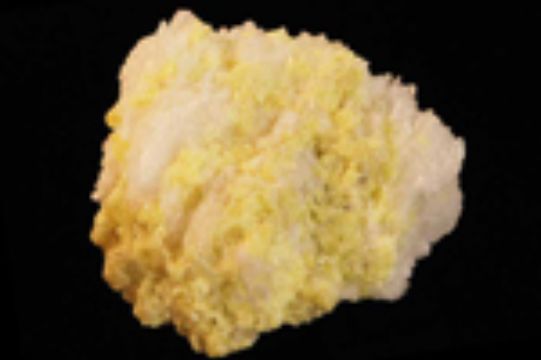Sulfur – Mineral and Healing Properties
Chemistry: S, Element
Class: Sulfides
Uses: Fertilizers, sulfuric acid, detergents.


Sulfur is a common element, with many uses. Although most sulfur is extracted from sulfides, Native Sulfur, being common, is also used as a source. The fine specimens from Agrigento and Cattolico in Sicily, Italy, are highly sought by mineral collectors and command very high prices.
Sulfur has many industrial uses. It is used in the manufacture of black powder, matches and explosives. It is also used to create rubber, in dyes, and as an insecticide and fungicide. It is also used in the manufacturing of sulfuric acid.
Origin Of The Name
The element sulfur got it’s name from the Latin word sulfur which means brimstone.

Interesting Facts
Being abundantly available in native form, sulfur was known in ancient times and is referred to in the Bible commonly referred to burning sulfur as “brimstone”, giving rise to the name of ‘fire-and-brimstone’ sermons, in which listeners are reminded of the fate of eternal damnation that await the unbelieving and unrepentant.
According to the Ebers Papyrus, a sulfur ointment was used in ancient Egypt to treat granular eyelids. Sulfur was used for fumigation in preclassical Greece; this is mentioned in the OdysseyPliny the Elder discusses sulfur in book 35 of his Natural History, saying that its best-known source is the island of Melos. He mentions its use for fumigation, medicine, and bleaching cloth.
A natural form of sulfur was known in China since the 6th century BC and found in Hanzhong. By the 3rd century, the Chinese discovered that sulfur could be extracted from pyrite.
Early alchemists gave sulfur its own alchemical symbol, a triangle at the top of a cross. In traditional skin treatment before the modern era of scientific medicine, elemental sulfur was used, mainly in creams, to alleviate conditions such as scabies, ringworm, psoriasis, eczema, and acne.
Where Is It Found
Sulfur can be found near hot springs and volcanic regions in many parts of the world, especially along the Pacific Ring of Fire; such volcanic deposits are currently mined in Indonesia, Chile, and Japan. Such deposits are polycrystalline, with the largest documented single crystal measuring 22?16?11 cm.
Historically, Sicily was a large source of sulfur in the Industrial Revolution. On Earth, just as upon Jupiter’s moon Io, elemental sulfur occurs naturally in volcanic emissions, including emissions from hydrothermal vents.
What Do We Do With It
Elemental sulfur is mainly used as a precursor to other chemicals. Approximately 85% is converted to sulfuric acid. With sulfuric acid being of central importance to the world’s economies, its production and consumption is an indicator of a nation’s industrial development. The principal use for the acid is the extraction of phosphate ores for the production of fertilizer manufacturing. Other applications of sulfuric acid include oil refining, wastewater processing, and mineral extraction. Sulfur reacts directly with methane to give carbon disulfide, which is used to manufacture cellophane and rayon.[16] One of the direct uses of sulfur is in vulcanization of rubber, where polysulfides crosslink organic polymers. Sulfites are heavily used to bleach paper and as preservatives in dried fruit. Many surfactants and detergents, e.g. sodium lauryl sulfate, are produced are sulfate derivatives.
Metaphysical Uses
Protection, Willpower, Healing Energy. Solid/clear yellow. Rejuvenating, especially if one does a great deal of thinking/mental wk and little physical exercise. Mental clarity, focus, analysis, understanding, willpower, discipline, confidence. Used in Egypt and modern hot springs/baths for arthritis, pain, rheumatism, swelling, lymph, cysts, hemorrhoids. Traditionally very healing for wounds, cleansing and healing skin, sinus, pancreas, liver, syphilis, appendix, indigestion, insomnia, depression; Strengthens endocrine glands. Found in garlic, mustard, chives, onions, horseradish, etc. Repels garden bugs.
Physical Characteristics
Color: Strong yellow color in thick crystals and duller yellow in small crystals to pale yellow in massive or powdery forms. Can also be reddish or greenish yellow with impurities.
Luster: Vitreous to more often resinous or earthy in massive forms.
Transparency: Transparent to translucent.
Crystal System: Orthorhombic; 2/m 2/m 2/m
Cleavage: Very poor in two directions.
Fracture: Conchoidial
Hardness: 2
Specific Gravity: 2.0 – 2.1
Streak: Yellow
Best Field Indicators: Color, odor, heat sensitivity, lack of good cleavage and crystal habit.


